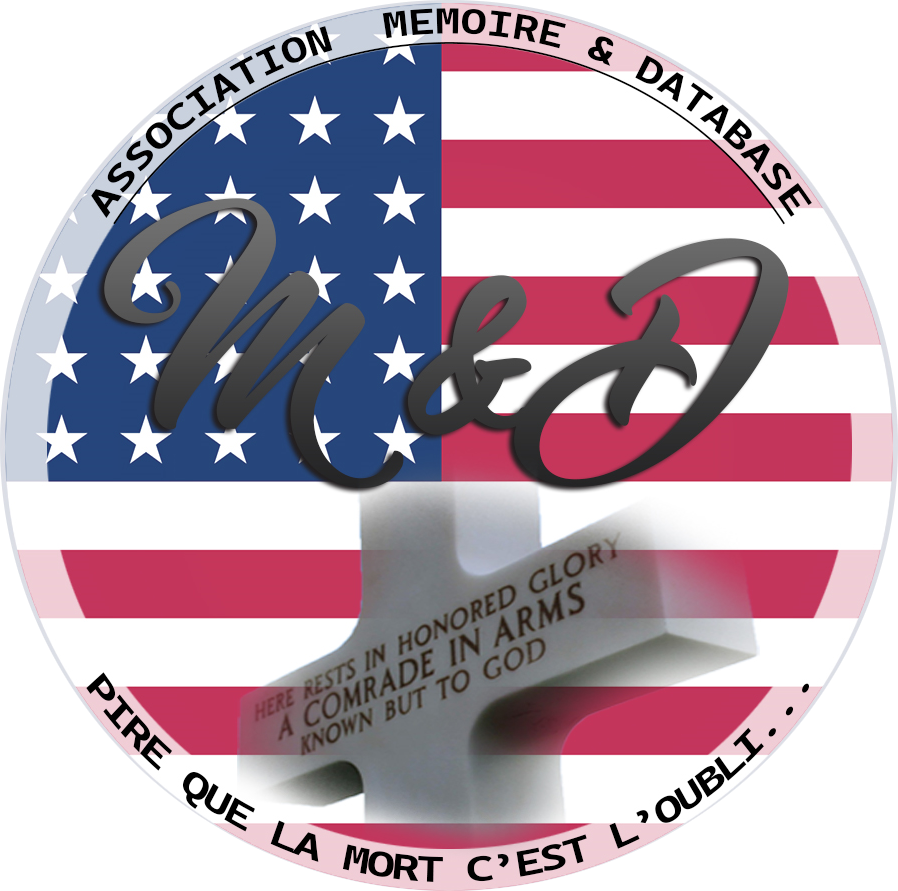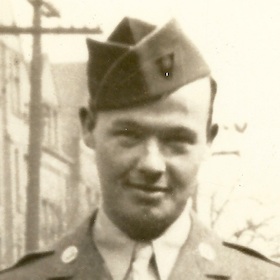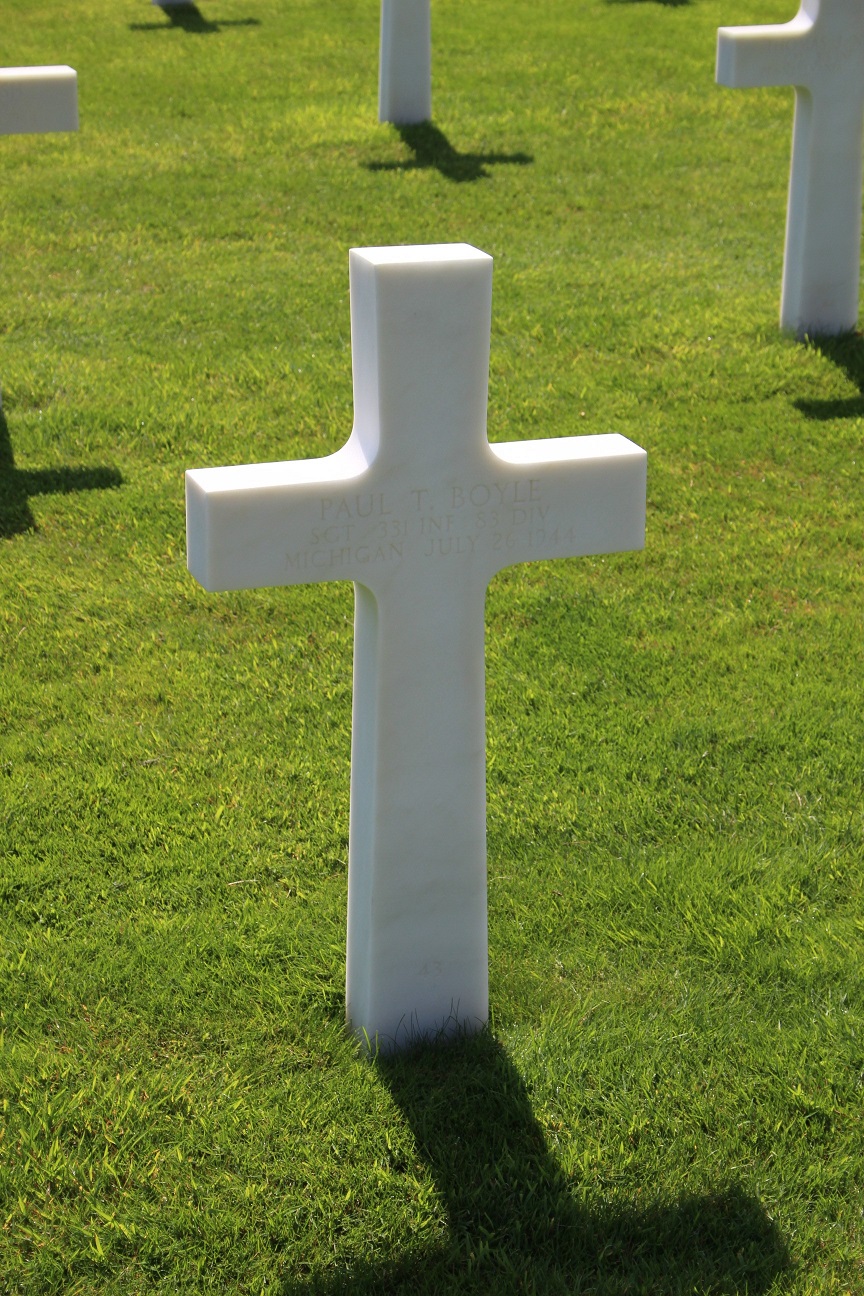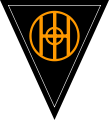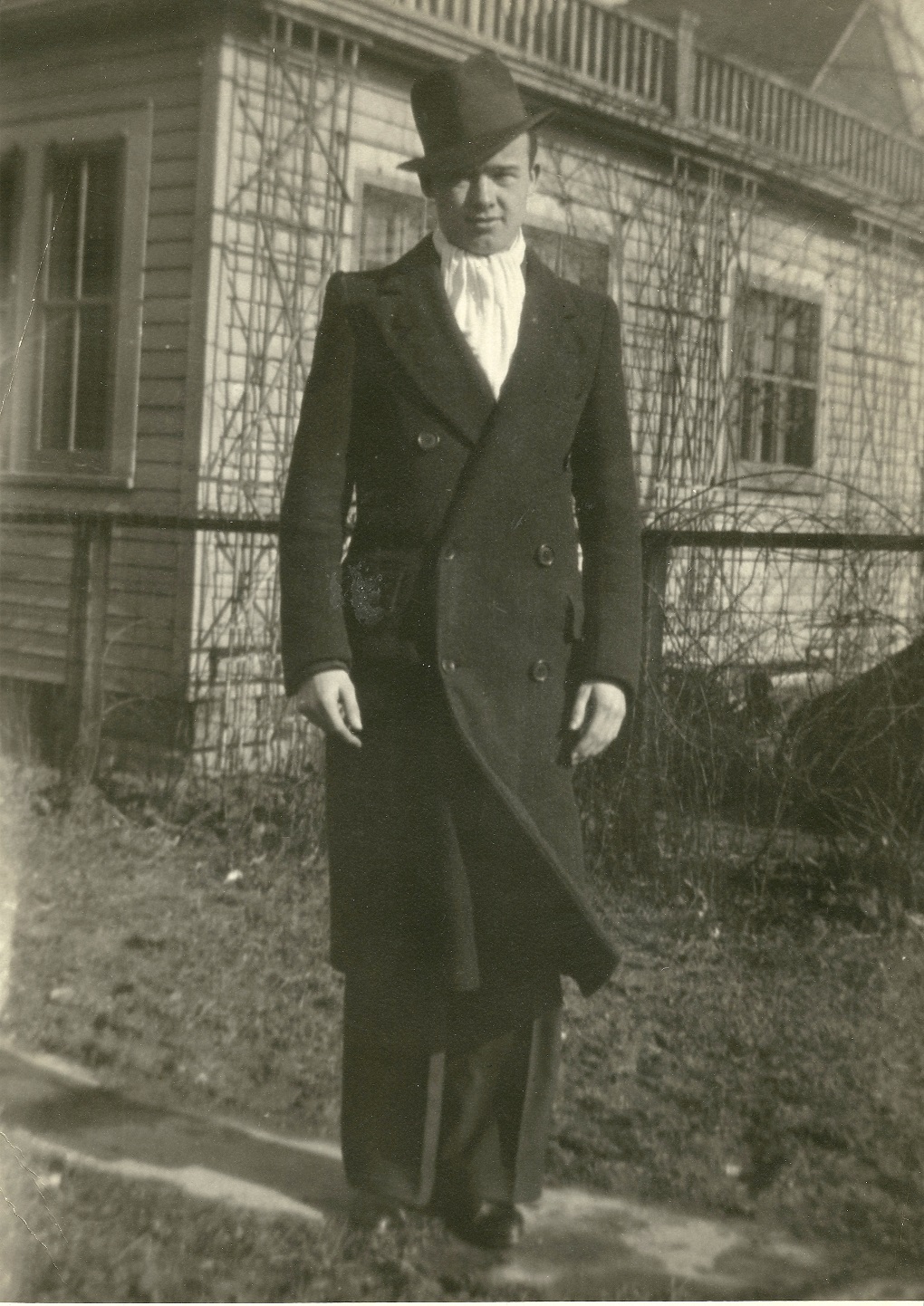|
Paul Theophane BOYLE
| ||||||||||||||||||||||||
|---|---|---|---|---|---|---|---|---|---|---|---|---|---|---|---|---|---|---|---|---|---|---|---|---|
|
Source : Joe Boyle
| ||||||||||||||||||||||||
| NUMBER OF SERVICE | 35519259 | |||||||||||||||||||||||
| AGE | 25 yo | |||||||||||||||||||||||
| DATE OF BIRTH | 2 October 1918 New Castle, Lawrence County, PENNSYLVANIA | |||||||||||||||||||||||
| ENLISTMENT STATE | MICHIGAN | |||||||||||||||||||||||
| FAMILY | Parents : Thomas P & Mary Magdalene Quinn Boyle Siblings : Thomas R, William J, Mary Rita, Stillborn S, Joseph P, John F & Arthur V | |||||||||||||||||||||||
| RANK | Sergeant | |||||||||||||||||||||||
| FONCTION | Infantry Man | |||||||||||||||||||||||
| JOB BEFORE ENLISTEMENT | Semiskilled occupations in manufacture of automobiles |  | ||||||||||||||||||||||
| DATE of ENLISTEMENT | 28 October 1942 Cleveland OHIO | |||||||||||||||||||||||
| COMPANY | Company C | |||||||||||||||||||||||
| REGIMENT SQUADRON | 331st Infantry Regiment | |||||||||||||||||||||||
| DIVISION GROUP | 83rd Infantry Division | |||||||||||||||||||||||
| DATE OF DEATH | 26 July 1944 |
Source : F Lavernhe
| ||||||||||||||||||||||
| STATUS | KIA | |||||||||||||||||||||||
| PLACE OF DEATH | Auxais | |||||||||||||||||||||||
| CEMETERY TEMPORARY |
CEMTERY TEMPORARY of Blosville N°3508
| |||||||||||||||||||||||
| CEMETERY | NORMANDY AMERICAN CEMETERY of Colleville | |||||||||||||||||||||||
| GRAVE |
| |||||||||||||||||||||||
| DECORATION |
| |||||||||||||||||||||||
| ||||||||||||||||||||||||
| STORY | ||||||||||||||||||||||||
|
Source : Joe Boyle
|
By : War Graves Before the WarPaul Theophane Boyle was born in New Castle, Pennsylvania, just a month before the end of the Great War. His father, Thomas Boyle, was a builder in New Castle, just north of Pittsburgh. The Great Depression cost the family their business, their home, and their father’s health. Throughout the early 1930s, the family traveled the country looking for a better life. After a few years on the road, they came back east and sunk roots in Cleveland. Boyle graduated from James Ford Rhodes High School in 1937 and later went to work at White Motors, a truck manufacturing company in Cleveland. With this experience, Boyle hoped that if he was drafted, he would be a mechanic. But on October 28, 1942, when he reported for duty, Boyle was assigned to the infantry and ordered to report to Camp Atterbury, Indiana. Military Experience
| |||||||||||||||||||||||
Final BattleThe 331st took its place for Operation Cobra – a massive offensive to break free of the hedgerows – before dawn on July 26. Their first objective was believed to be a thinly-defended line that would wilt under direct attack. This assessment would prove fatally optimistic. Around 5 a.m., a Sherman tank rumbled to the front. Boyle’s squad moved into position, hoping to quietly set up their machine gun position. Suddenly, an American tank opened fire – eliminating the element of surprise. Left in the line of German fire were the men of C Company. He was sitting on the roof. His mom said he wouldn’t talk to me. The kid said ‘I want you to follow me to the orchard. I’ll sit on a stump and face the other way. I’ll tell you. It was a machine gun outfit. They were putting guns around the hedgerow. Boyle gave the orders, a sniper shot him through the shoulder. He got on his hands and knees said ‘don’t retreat!’ crawled back, and the sniper shot him again.’ CommemorationEven after the family was notified of his death in mid-August, his mother sought answers. Mary Boyle wrote frequently to the Army seeking information. Eventually, she had to decide where her son’s body should be buried. On February 14, 1949 – St. Valentine’s Day – Sergeant Paul T. Boyle at last was laid to rest in peace among his comrades at Normandy American Cemetery. |
Source : Joe Boyle
| |||||||||||||||||||||||
Activated/Activé |
Normandy/Normandie |
| 15 Aug 1942 | Days of Combat/Jour de Combat 244 |
| Casualties/Victimes 15 910 | |
Entered Combat/Entré au combat |
|
| 27 June 1944 Normandy | |
|
Commanding Generals/Commandants généraux Maj. Gen. Frank W. Milburn (Aug 42 - Dec 43) |
Campaigns/CampagnesNormandy (6 Jun 44 - 24 Jul 44) |
PLAN DE ROUTE DE LA CAMPAGNE - CAMPAIGN ROUTE MAP |
|
 |
|
DIVISION CHRONICLEThe 83rd Infantry Division arrived in England on 16 April 1944. After training in Wales, the Division landed at Omaha Beach, 18 June 1944, and entered the hedgerow struggle south of Carentan, 27 June. Taking the offensive, the 83d reached the St. Lo-Periers Road, 25 July, and advanced 8 miles against strong opposition as the Normandy campaign ended. After a period of training, elements of the Division took Chateauneuf, 5 August, and Dinard, 7 August, and approached the heavily fortified area protecting St. Malo. Intense fighting reduced enemy strong points and a combined attack against the Citadel Fortress of St. Servan caused its surrender, 17 August. While elements moved south to protect the north bank of the Loire River, the main body of the Division concentrated south of Rennes for patrolling and reconnaissance activities. Elements reduced the garrison at Ile de Cezembre, which surrendered, 2 September. The movement into Luxembourg was completed on 25 September. Taking Remich on the 28th and patrolling defensively along the Moselle, the 83d resisted counterattacks and advanced to Siegfried Line defenses across the Sauer after capturing Grevenmacher and Echternach, 7 October. As the initial movement in operation "Unicorn," the Division took Le Stromberg Hill in the vicinity of Basse Konz against strong opposition, 5 November, and beat off counterattacks. Moving to the Hurtgen Forest, the 83d thrust forward from Gressenich to the west bank of the Roer. It entered the Battle of the Bulge, 27 December, striking at Rochefort and reducing the enemy salient in a bitter struggle. The Division moved back to Belgium and Holland for rehabilitation and training, 22 January 1945. On 1 March, the 83d advanced toward the Rhine in the operation "Grenade," and captured Neuss. The west bank of the Rhine from North of Oberkassell to the Erft Canal was cleared and defensive positions established by 2 March and the Division renewed its training. The 83d crossed the Rhine south of Wesel, 29 March, and advanced across the Munster Plain to the Weser, crossing it at Bodenwerder. As opposition disintegrated, Halle fell on 6 April. The Division crossed the Leine, 8 April, and attacked to the east, pushing over the Harz Mountain region and advancing to the Elbe at Barby. That city was taken on the 13th. The 83d established a bridgehead over the river but evacuated the area to the Russians on 6 May 1945. |
CHRONIQUE DE DIVISIONLa 83rd Infantry Division arriva en Angleterre le 16 avril 1944. Après s'être entraîné au Pays de Galles, la Division débarqua à Omaha Beach, le 18 juin 1944, et entra dans la lutte des haies au sud de Carentan, le 27 juin. Prenant l'offensive, le 83d atteint la route de St. Lo-Periers, le 25 juillet, et avance de 8 milles contre une forte opposition à la fin de la campagne de Normandie. Après une période d'entraînement, des éléments de la division prirent Châteauneuf le 5 août et Dinard le 7 août, et approchèrent de la zone fortement fortifiée qui protégeait Saint-Malo. Les combats intenses ont réduit les points forts de l'ennemi et une attaque combinée contre la citadelle de Saint-Servan a provoqué sa reddition, le 17 août. Tandis que les éléments se déplaçaient vers le sud pour protéger la rive nord de la Loire, le gros de la division se concentrait au sud de Rennes pour des activités de patrouille et de reconnaissance. Les éléments ont réduit la garnison à l'île de Cezembre, qui s'est rendue, le 2 septembre. L'entrée au Luxembourg s'est achevée le 25 septembre. Prenant Remich le 28 et patrouillant défensivement le long de la Moselle, le 83d a résisté aux contre-attaques et a avancé aux défenses de Siegfried Line à travers la Sauer après avoir capturé Grevenmacher et Echternach, le 7 octobre. En tant que mouvement initial de l'opération "Unicorn", la division a pris le Stromberg Hill à proximité de Basse Konz contre une forte opposition, le 5 novembre, et a battu les contre-attaques. En se déplaçant à la forêt de Hurtgen, le 83d s'est propulsé de Gressenich à la rive ouest du Roer. Il est entré dans la Bataille des Ardennes, le 27 décembre, frappant à Rochefort et réduisant le saillant ennemi dans une lutte acharnée. La Division est retournée en Belgique et en Hollande pour y être réhabilitée et entraînée, le 22 janvier 1945. Le 1er mars, la 83e s'est avancée vers le Rhin dans l'opération "Grenade" et a capturé Neuss. La rive ouest du Rhin, du nord d'Oberkassell au canal Erft, a été défrichée et des positions défensives ont été établies le 2 mars et la division a renouvelé son entraînement. La 83e traversa le Rhin au sud de Wesel, le 29 mars, et s'avança à travers la plaine de Munster jusqu'à la Weser, la traversant à Bodenwerder. Alors que l'opposition se désintégrait, Halle tomba le 6 avril. La Division traversa la Leine, le 8 avril, et attaqua à l'est, repoussant la région du Harz et s'avançant vers l'Elbe à Barby. Cette ville a été prise le 13. La 83e établit une tête de pont au-dessus de la rivière mais évacue la région vers les Russes le 6 mai 1945. |
| SOURCE INFORMATION & PHOTO | Armydivs.squarespace.com |
|---|
| SOURCE INFORMATION & SOURCE PHOTO | Aad.archives.gov - Abmc.gov - Findagrave.com - Nhdsilentheroes.org |
|---|---|
| PROGRAMMER | Henri, Garrett, Clive, Frédéric & Renaud |


